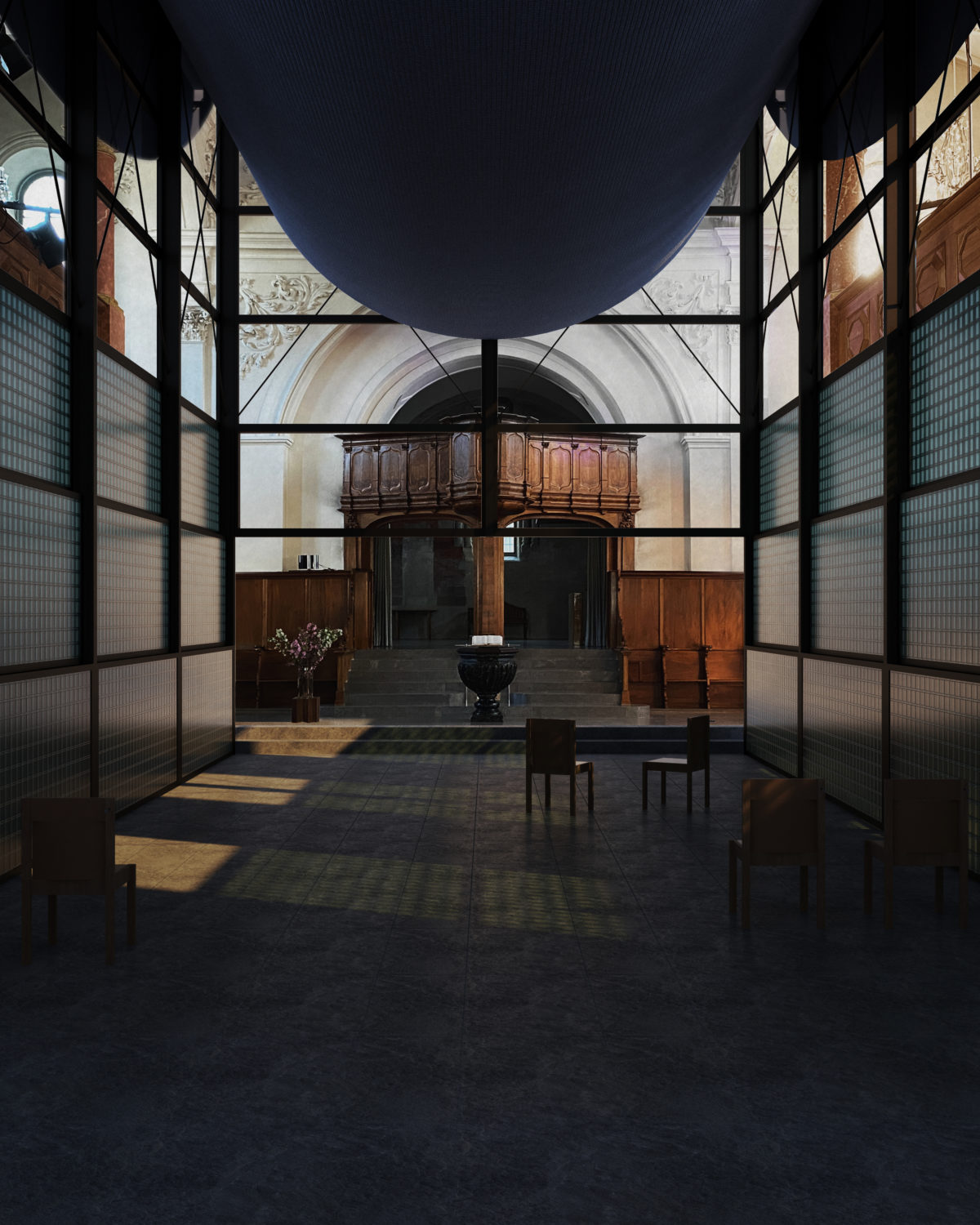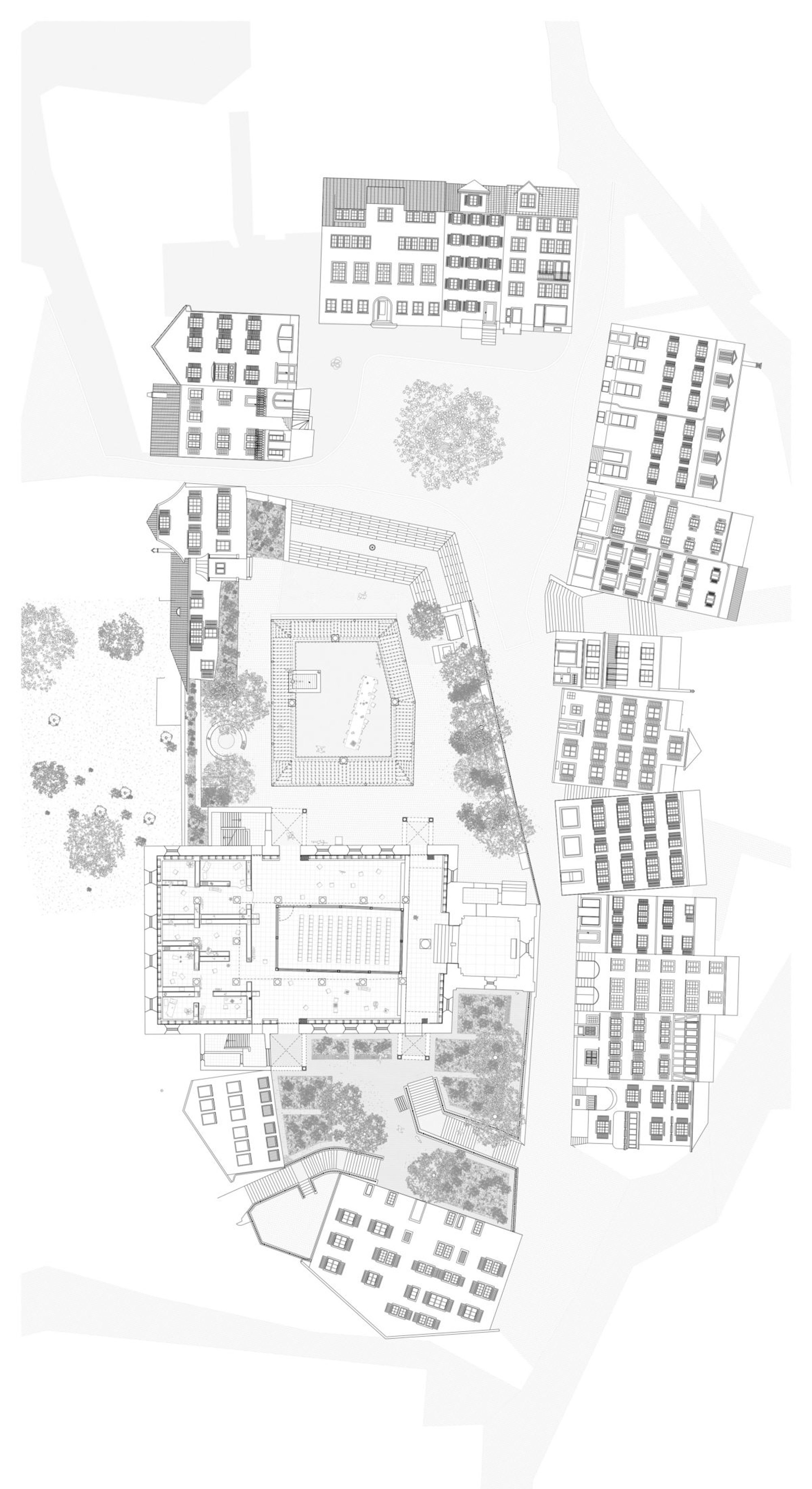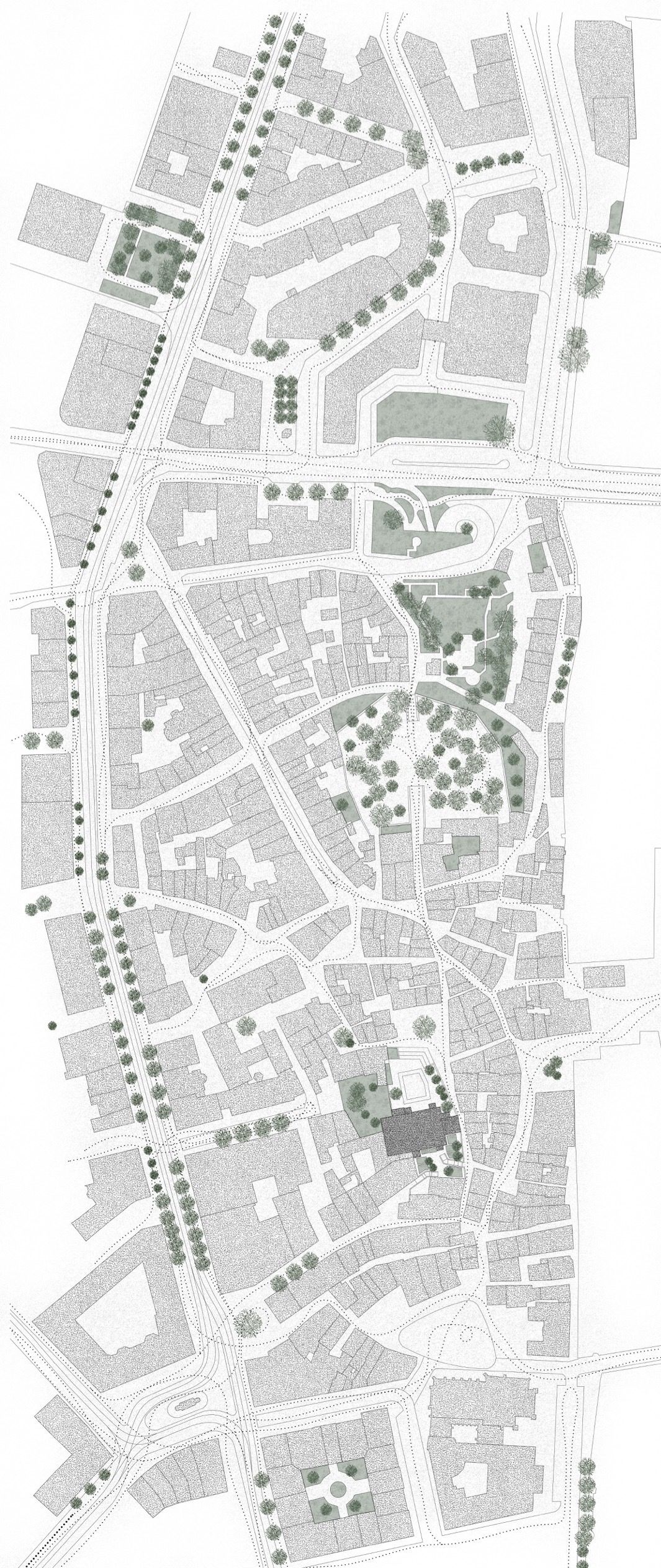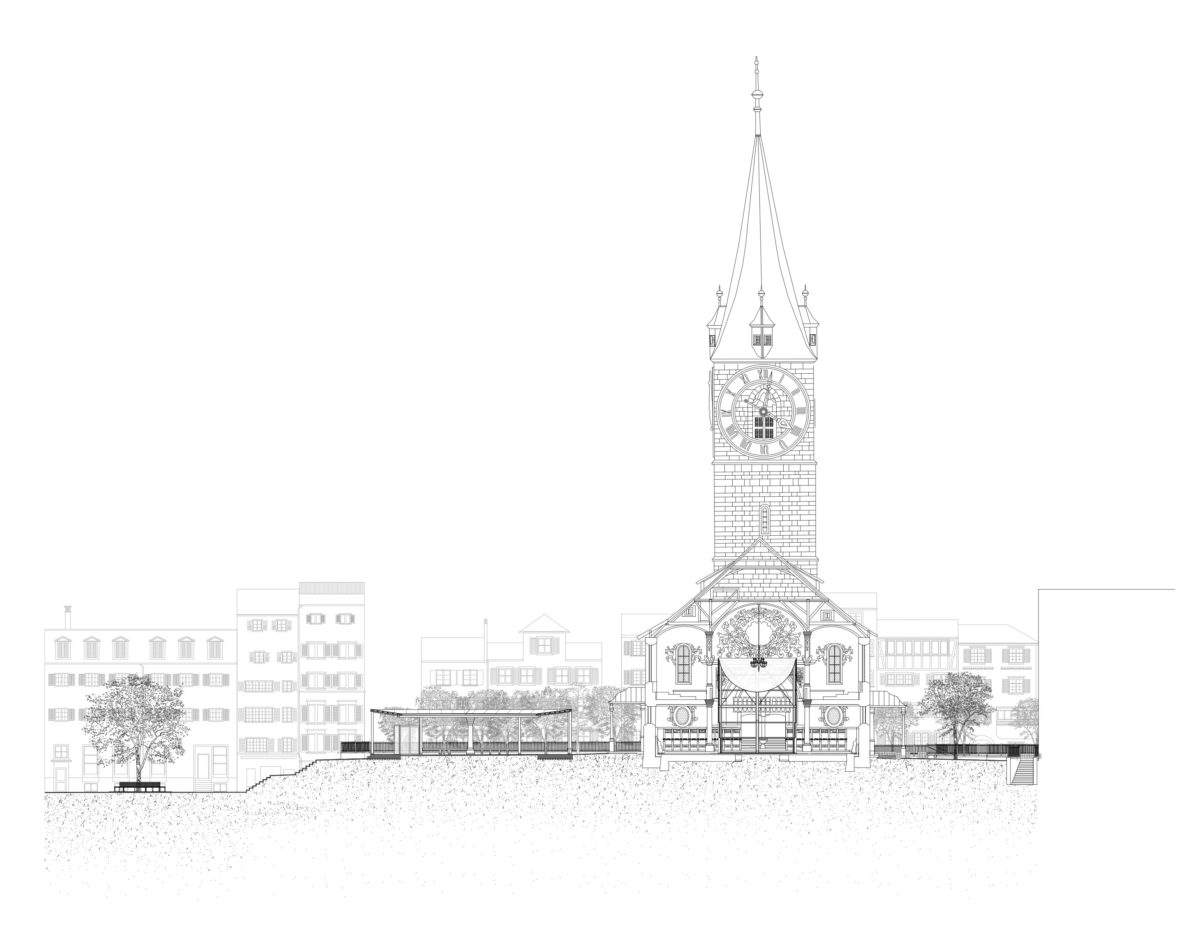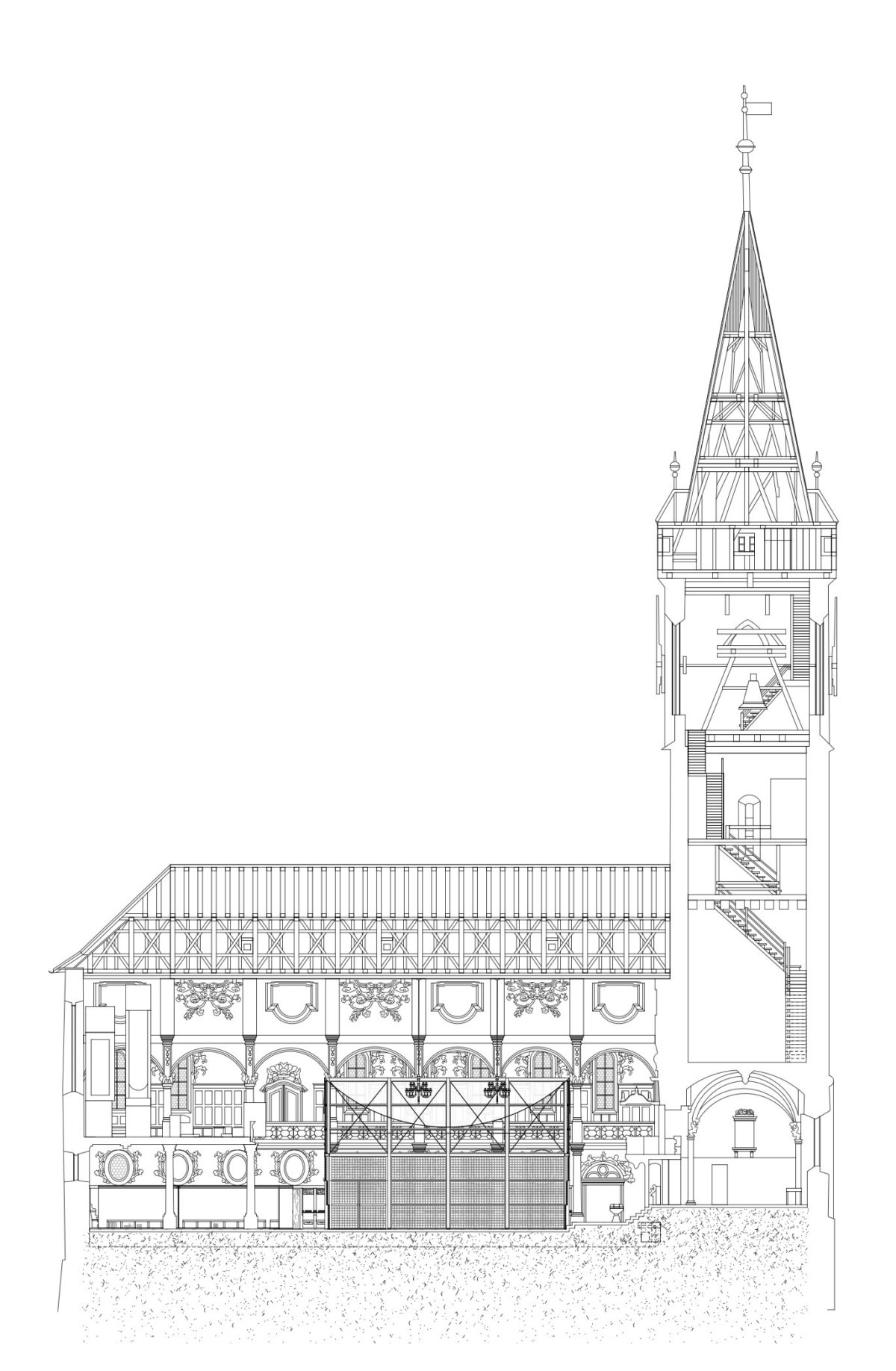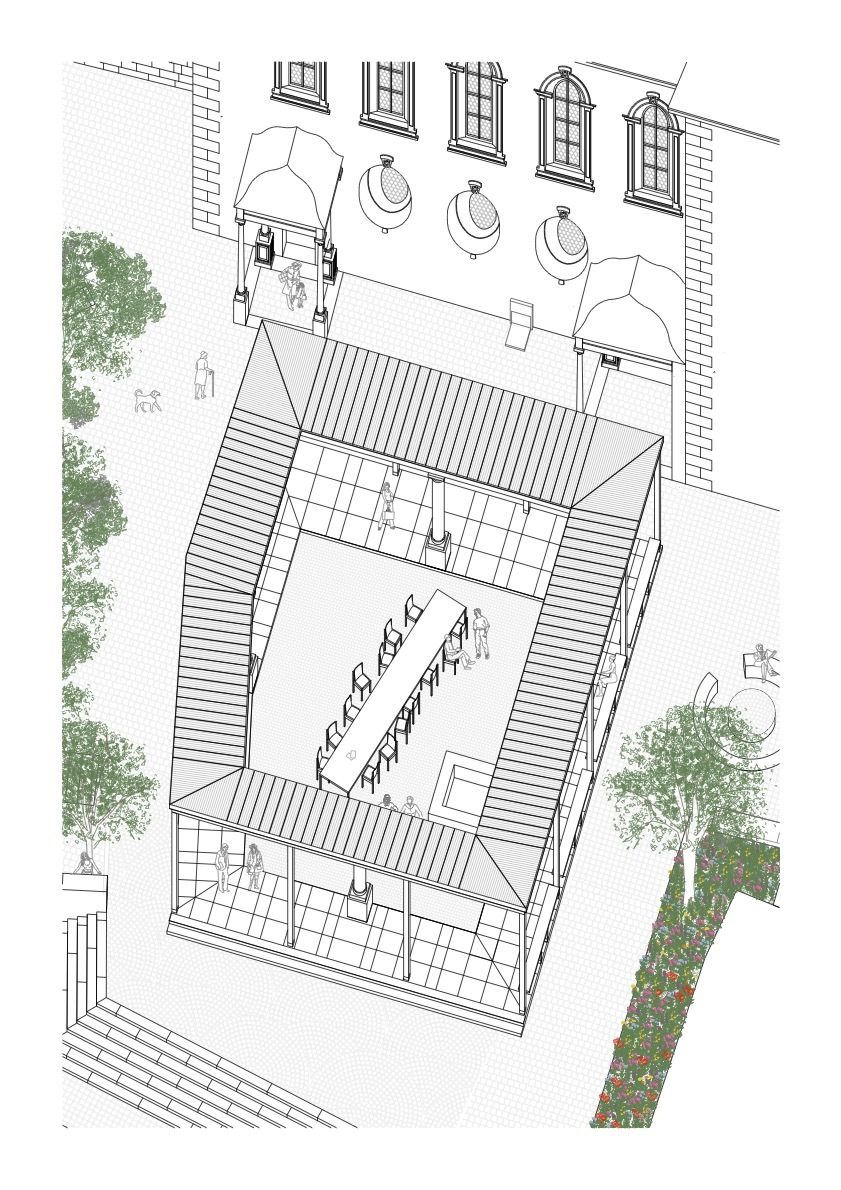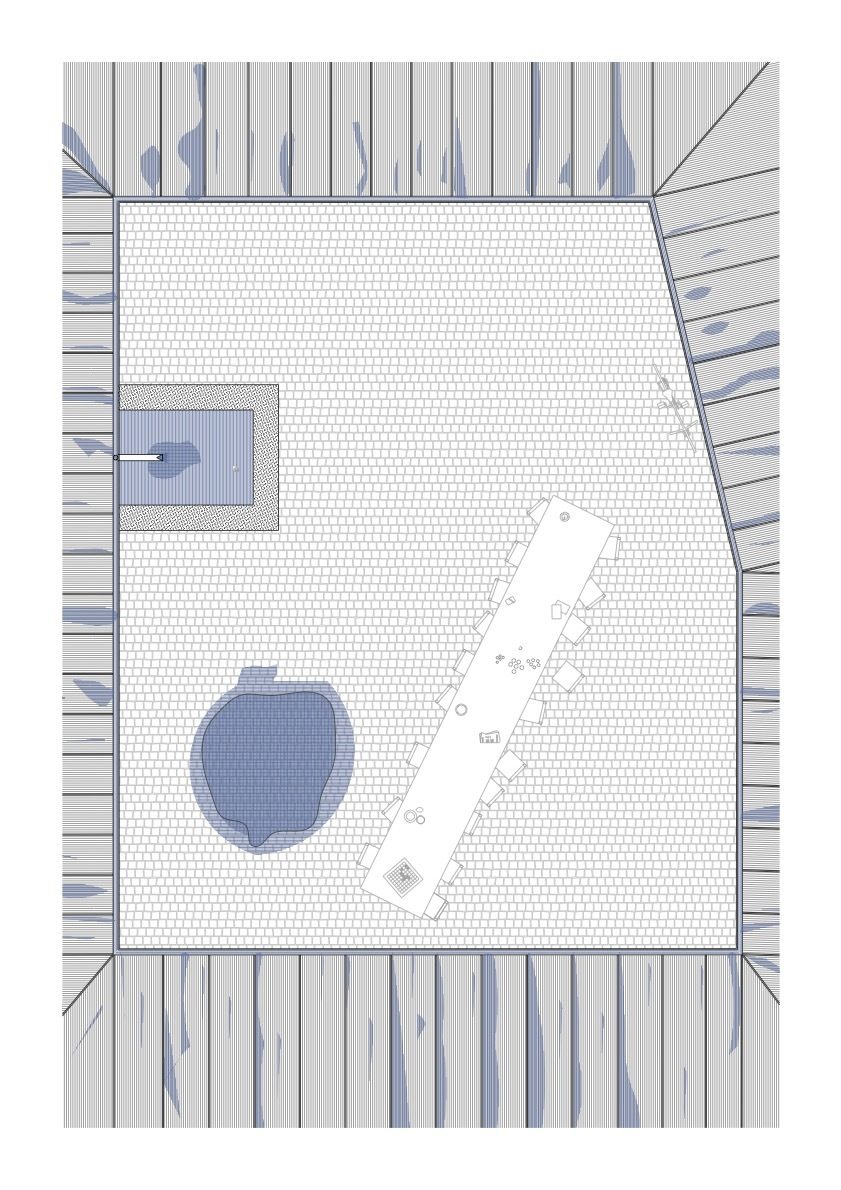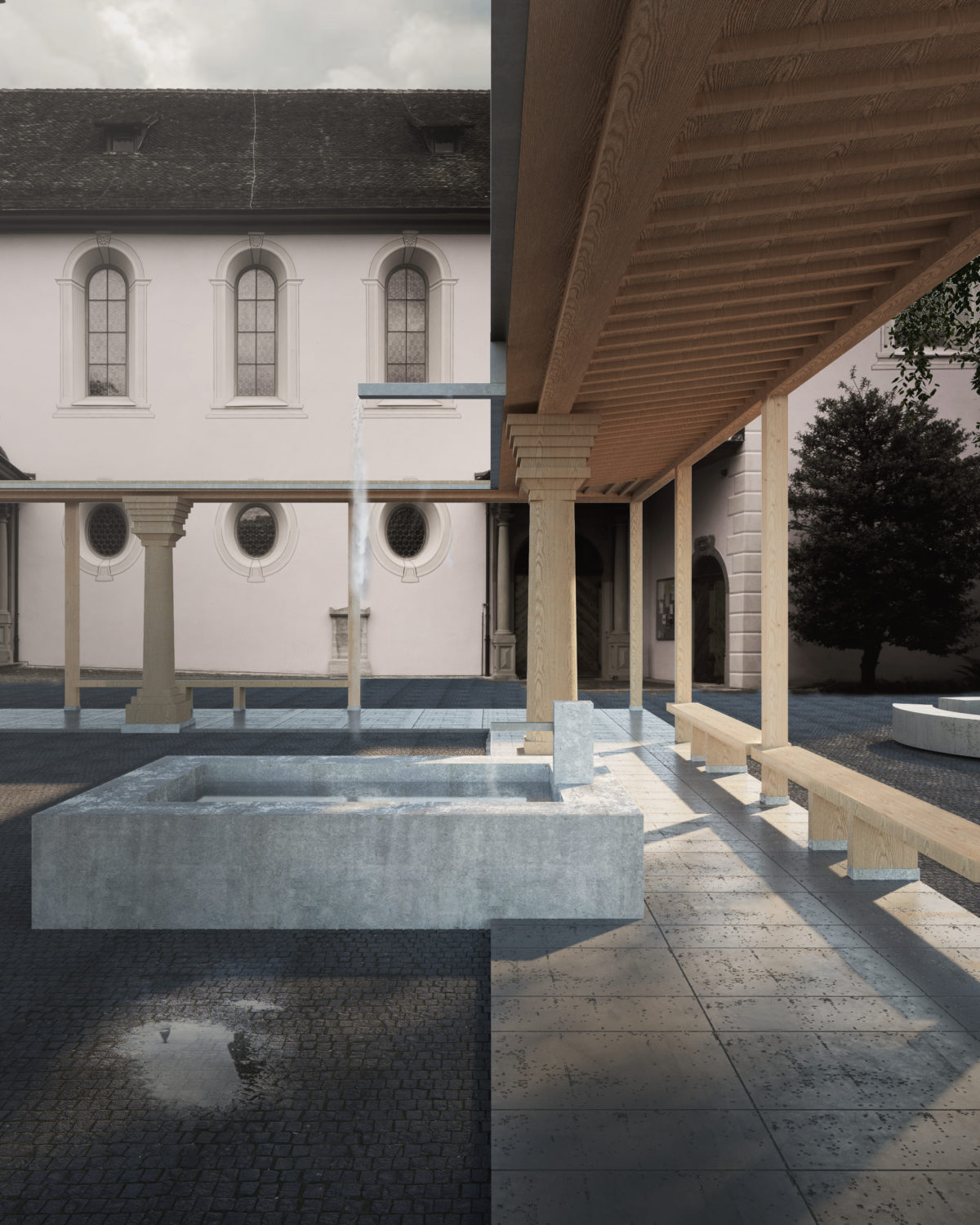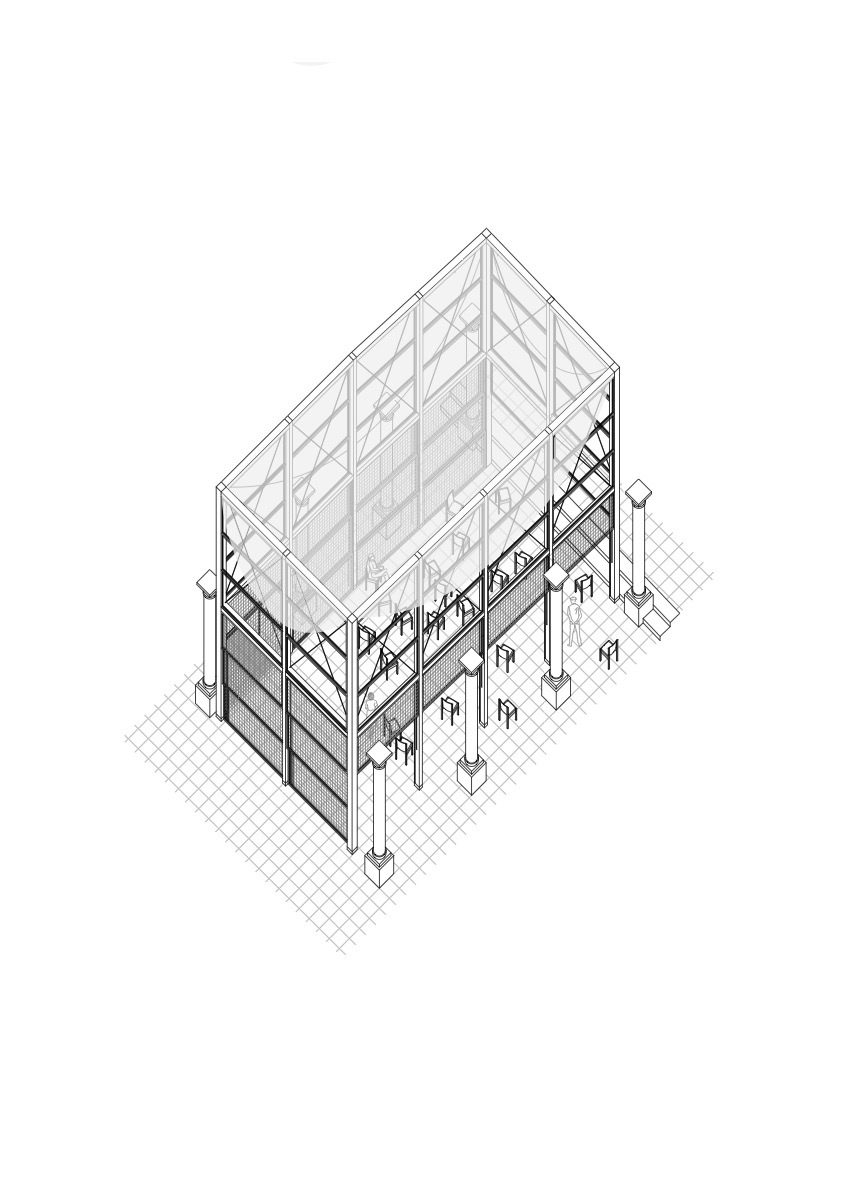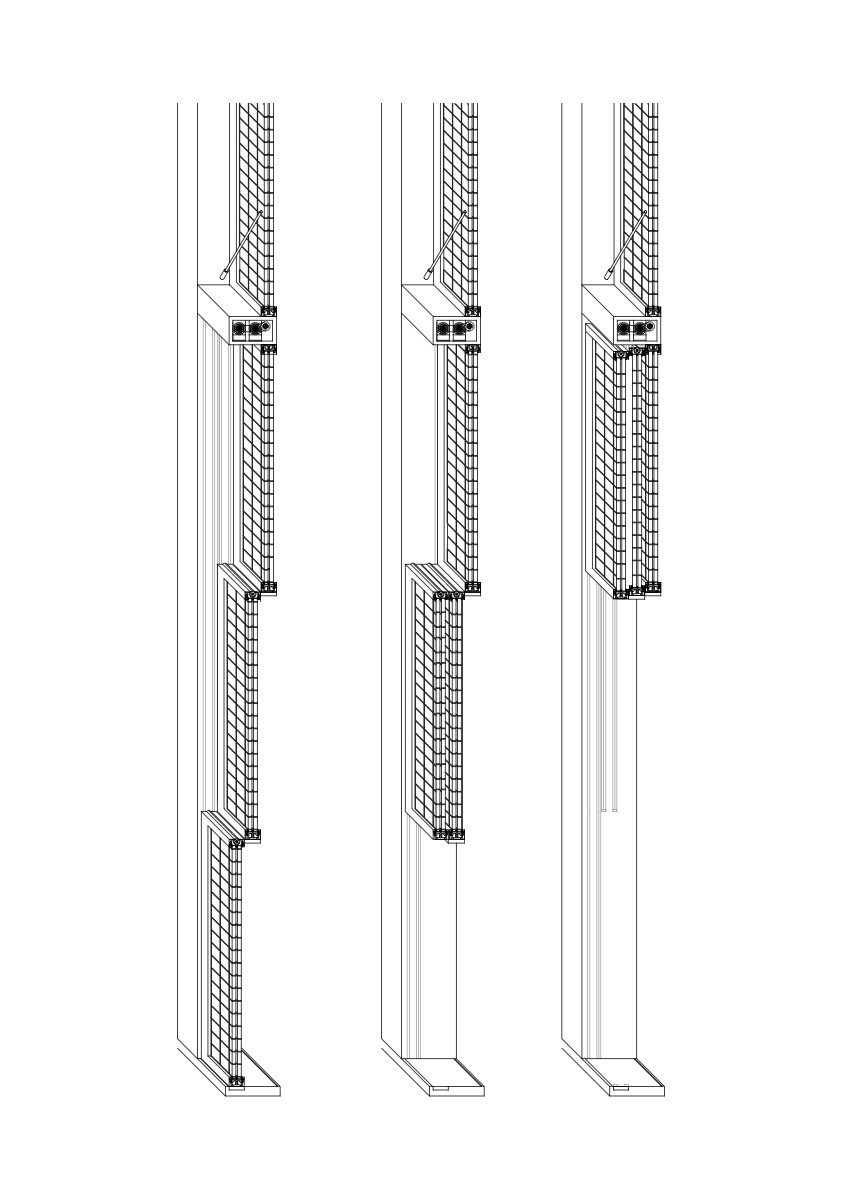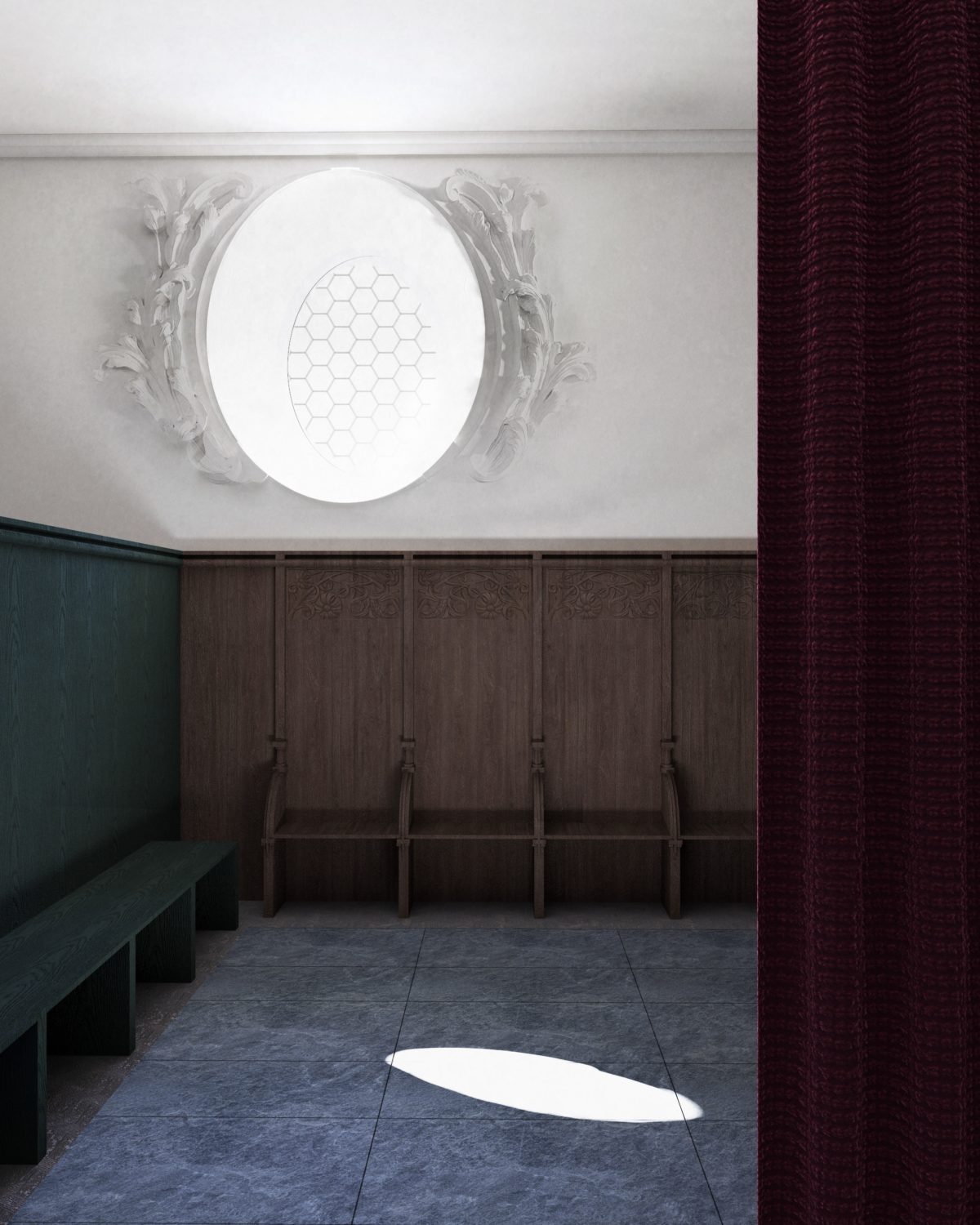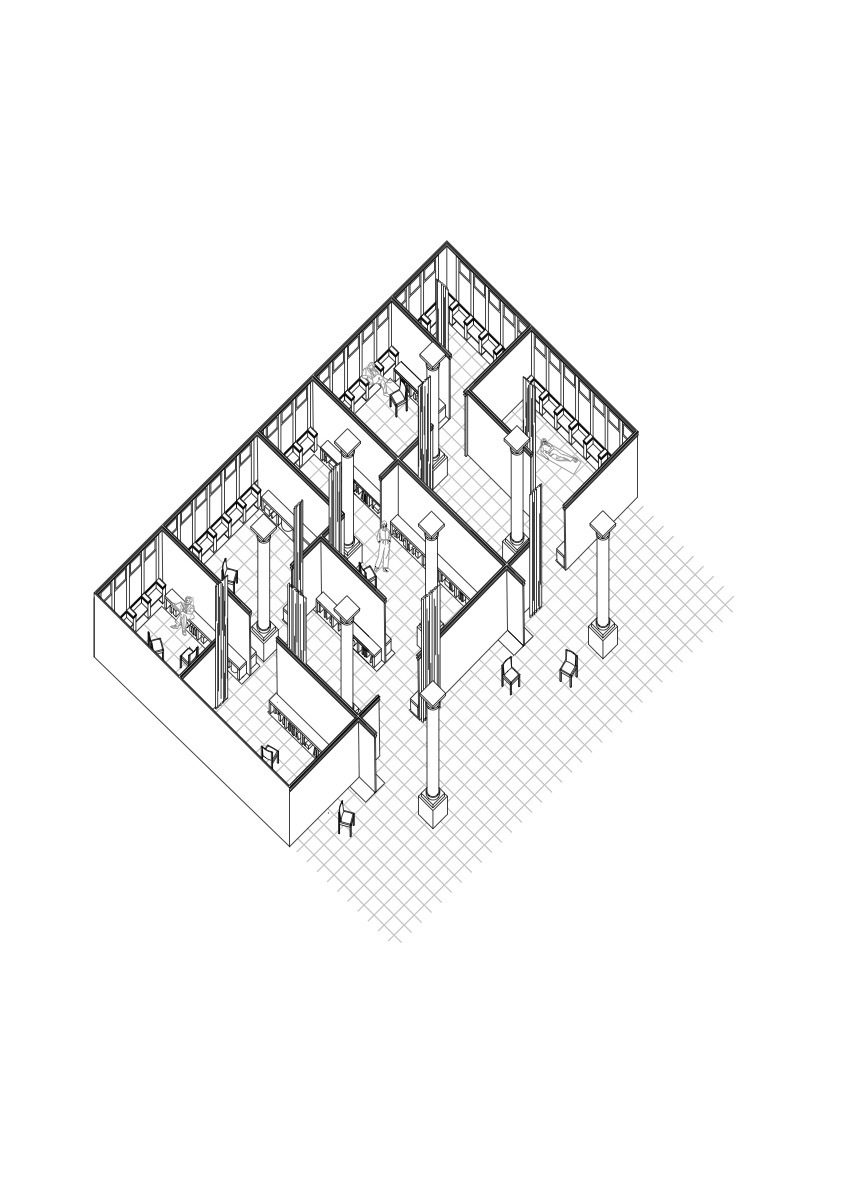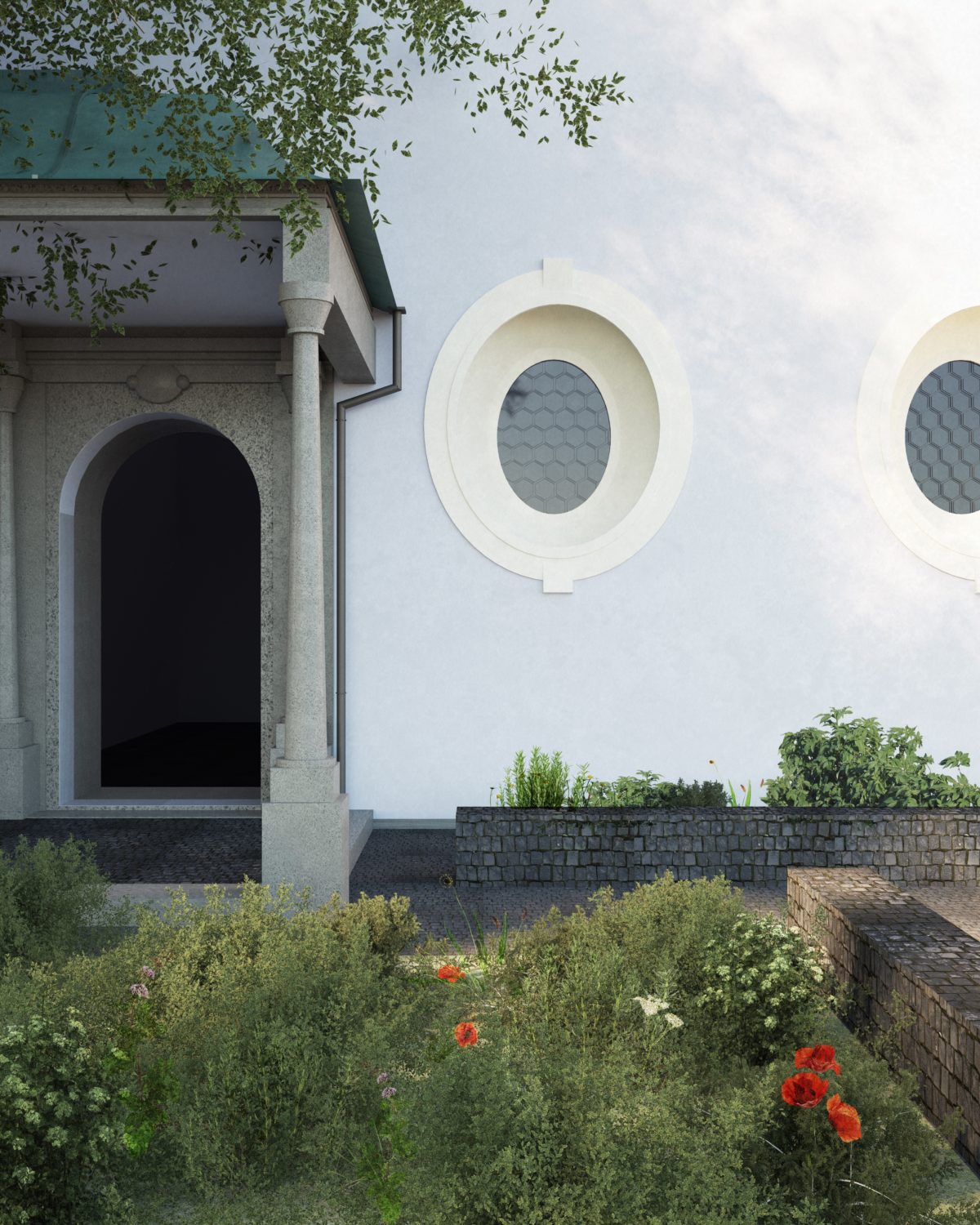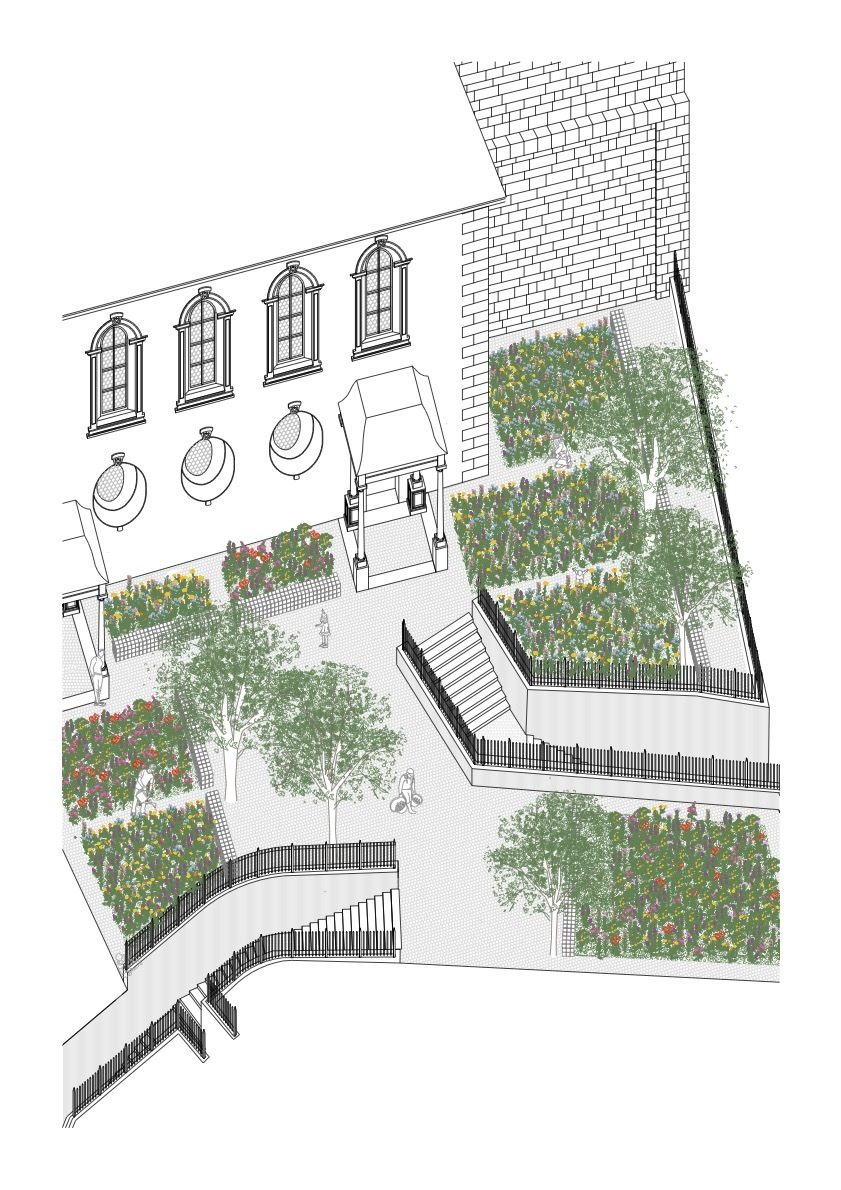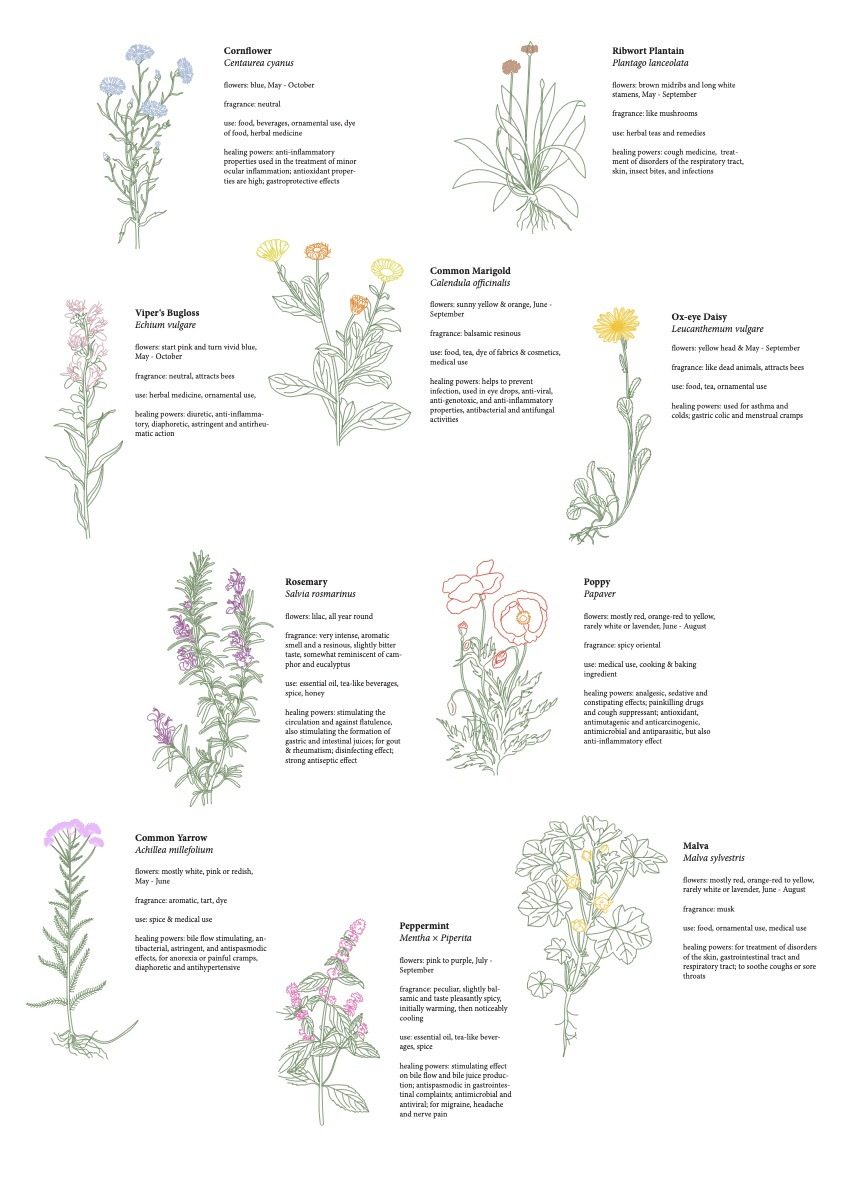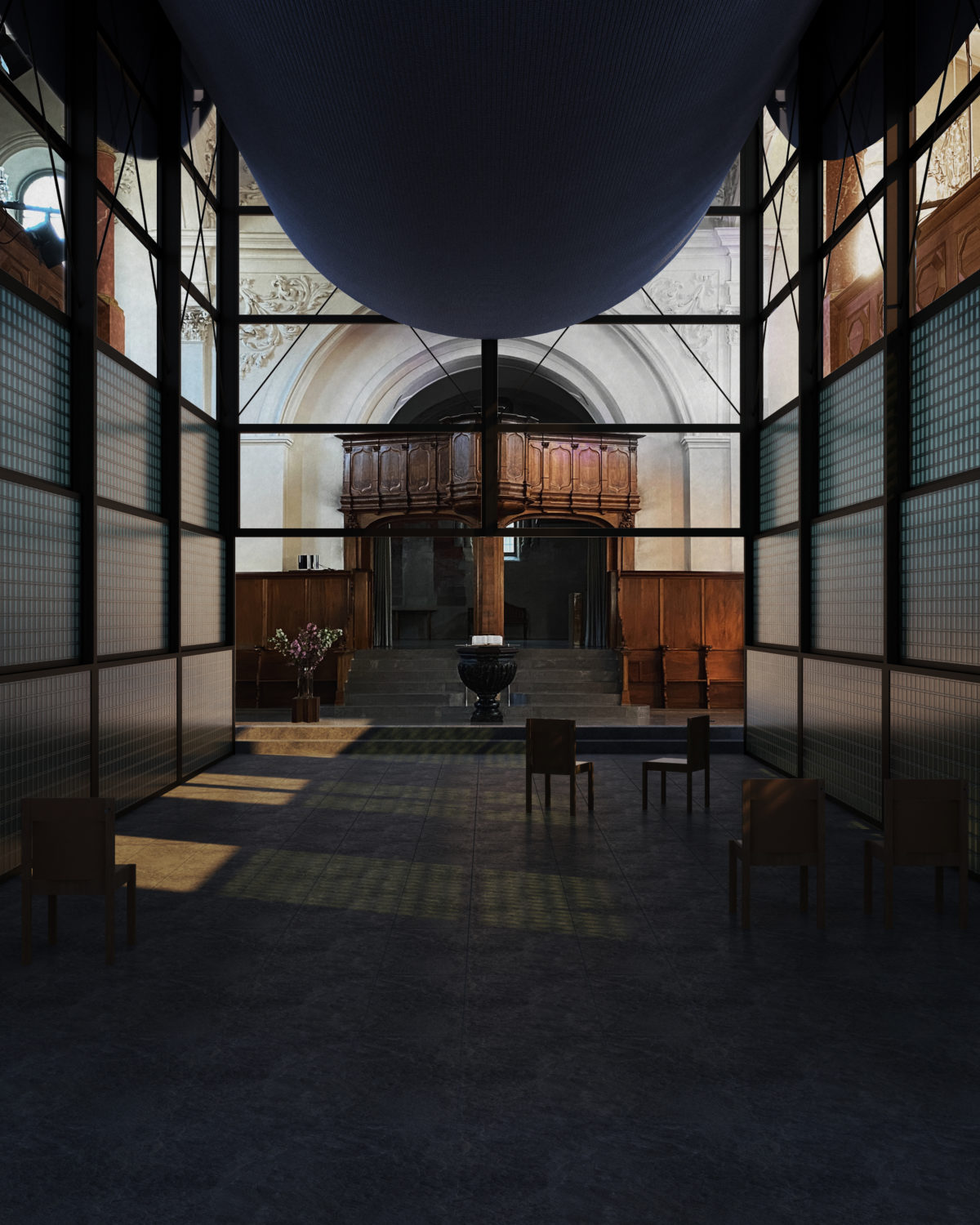Time
In a world where time is inevitably associated with money, places to escape are a rarity. Consumption shapes our behavior patterns and corrupts our inner path to a liberated life or a life after liberated time, where time does not mean money and where time is not connected to any productivity. The city‘s shape is one big display of our economic system, where human beings are degraded to replaceable parts of this unconceivable machine.
There is a lack of places which do not dictate where one can be and where one does not have to conform to a predetermined status quo and subordinate oneself to the productivity of the system.
The goal of a church is for an individual to be able to escape from everyday life and relate to their inners selves through ritual and meditation. A spiritual space can only be experienced when it stands in contrast to everyday life. Accordingly, a church must dissociate itself from the productivity and pressures of society.
By crossing Bahnhofstrasse, one is fully exposed to capitalism. With each step away from Bahnhofstrasse and moving closer to Niederdorf, one also enters a time capsule. Time is constantly decelerating. The tower of St. Peter’s Church protrudes behind the old town houses and can be seen from afar, however the path does no lead there directly.
The St. Peterhofstatt is an oasis. One feels relieved from the stress of everyday life. People come to the square to have lunch, to find a quiet minute or to relax. Like a black hole in the consumer-driven world, it is quiet and deserted. A rarity in the otherwise pulsing world. The big stairs act as a platform, the square as a promise for interaction between people.
To gain spiritual experience, one must always gain a sensual experience first. This is achieved through crossing the square and entering the church. The church forms a continuous space with the forecourt. The atmosphere of an oasis that can be felt in the square is transmitted to the church itself. It is a place detached from time and capitalistic pressure. A place for the community, where one can pray, work and live, where rituals happen, where the connection between the past and the future is accomplished. The church itself becomes a forecourt, the forecourt becomes the church. A continuous space of possibility is created that functions as an oasis. An oasis for a liberated time, for possibilities, for spirituality and for a space without regulations and without a program. An oasis for all.
Cloister
The cloister on the forecourt of St. Peter’s Church manifests itself as a new gateway and meeting point for the church and the square by structuring it. The atrium acts as a center for the forecourt. The slope of the roof collects rain water and directs it through a gutter into the fountain. One is constantly confronted with the calming sound of falling water.
Sanctuary
The old doors of the church are removed so that the church space can be read as one continuous space with the forecourt, now also functioning as a roof. A new structure is created inside the church that provides a new space for prayer. As the congregation of active churchgoers dwindles, the size is adjusted accordingly. The form is defined by the shape of the prior Romanesque church. This creates an asymmetry with the nave. The prayer room aligns on one side to the old church tower and interrupts the symmetry of the nave, creating a direct connection between the entrance of the church and the room. The prayer room reads like a canopy. It protects the sanctuary of the church and its congregation. The filigree steel structure is covered by a fabric roof. The windows on all sides are equipped with a motor, which allows one to raise the windows to enlarge the prayer room in case of a bigger event. By separating the prayer room, the rest of the church can be read as one space.
Cell
In the back of the church, cells open up to further reduce the size of the large church space. The cells allow one to find isolation. Through the placement of the walls and the pews set against them, each niche takes on a private character and gives new meaning to the existing choir stalls. One comes to terms with oneself and defines one’s own program. The area is lit sparsely compelling visitors to focus more on their other senses.
Herb garden
The rear St. Peterhofstatt opens up to nature in a new way. Parts of the head pavement are removed and re-stacked as benches. The areas without head paving are covered with plants, which support the sensory experience one can have in this place. Specific local wildflowers and herbs are chosen that are visually stimulating and secondly attend to the sense of smell.
Even if the place is visited daily, it is still detached from everyday life. The place itself creates a “purposeful uselessness” and thus withdraws from the ordinary state of the city. One is confronted with one’s senses at every moment, which leads to a confrontation with oneself. The place offers a chance in a central and prominent location to create spaces that relate to the human being and do not have to make capitalistic profit.
